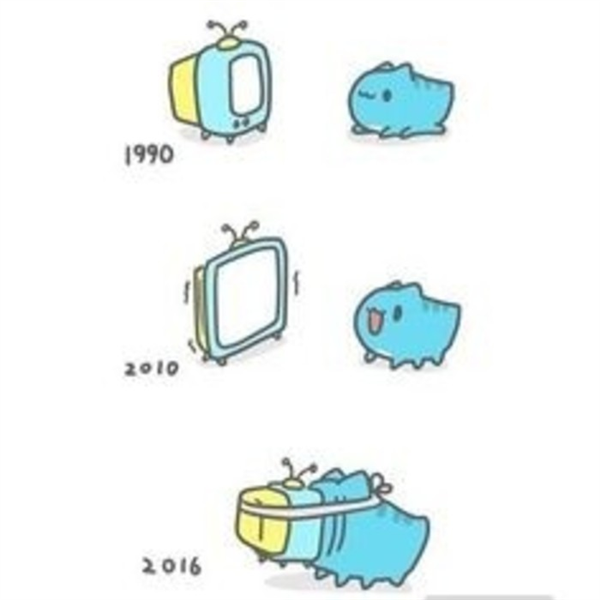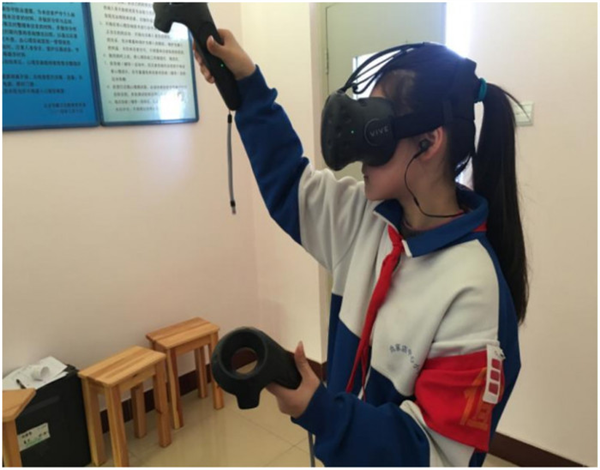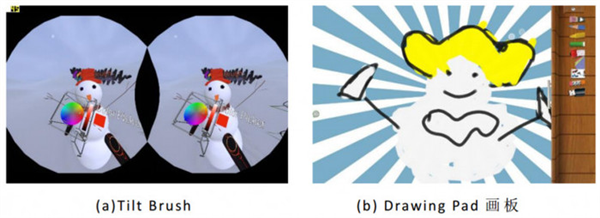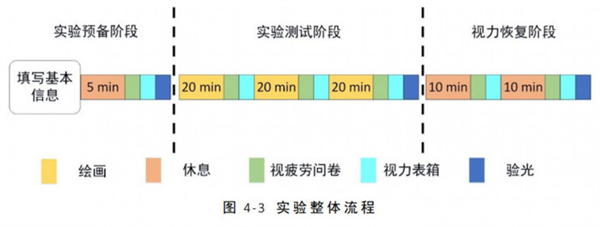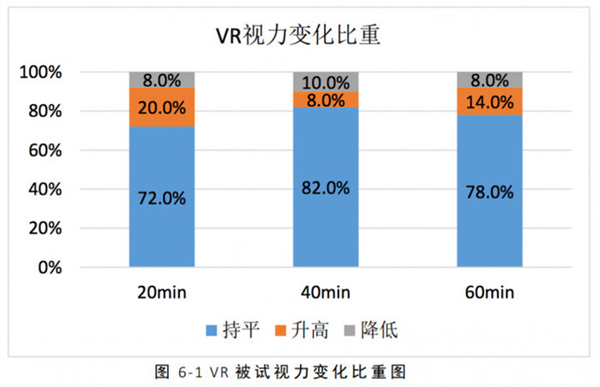Remember the picture that was passed down in the circle of friends last year? It’s the following one. In the hottest time of VR, this picture expresses a lot of people’s views on VR. Then, "Looking so close to watching TV, simply getting into the TV and getting it" has finally become a reality. Mothers are worried about their child's eyesight, so remind their children not to be too close to watching TV. According to the above picture, VR is basically equivalent to you getting into the TV. So VR should hurt your eyesight more than TV? This may not be the case. Recently, Beijing Future Image Intensive Innovation Center and Beijing Institute of Technology and other units have designed an experiment to explore the impact of long-term use of VR head-mounted display devices on the vision of users of lower ages. The experimental control product was a flat panel and it was found that long-term use of VR is no more harmful to vision than using a flat panel, and some aspects have even more positive effects. Although the control group is not a TV, it can be explained that some of the inherent concepts may not be correct. Experimental background and method The experiment was attended by three units, namely Beijing Advanced Image Innovation Center, Beijing Institute of Technology and Blue Cursor, and invited Vive Immersive Media Lab and St. Vitus to advise on the experimental process and participate in the supervision. experiment procedure. Vive mainly provides VR head-mounted display devices and test environment support in the experiment. Experimental site photo A total of 50 participants participated in the experiment, with 26 males and 24 females, divided into fourth-grade and sixth-grade groups according to age. They were assigned to use 1 hour VR and 1 hour flat, respectively, and recorded eye fatigue and vision changes after use. The VR content used in the experiment is "Tilt Brush" and the tablet content is "Drawing Pad Artboard". The overall process of the experiment is divided into three phases: the experimental preparation phase, the experimental testing phase, and the vision recovery phase. Visual fatigue questionnaires, eye chart boxes and optometry tests were inserted at each stage. Experimental results: VR does not have a flat eye, but it may be more fatigued. Let's take a look at the overall situation. This experiment found the following results: 1. The subjective visual fatigue of the VR experience and the visual fatigue caused by the tablet are recoverable after a short break; 2. In terms of visual acuity, due to the large amount of hyperopia, the visual acuity of most of the younger subjects showed a flat or even increased situation before the experiment; 3. In the case of relatively continuous use of 1 hour flat plate, the proportion of people with visual acuity increased in VR subjects was higher; 4. In general, the use of VR heads and the use of flat panels for low-age users has a similar impact on visual acuity, and even has a more positive impact. Regarding the first point, the actual data is that in the four symptoms of eye irritation, blurred vision, dry eyes, and headache, the fourth-grade plate group did not show the above four symptoms at all, consistent with the pre-experimental level, and using VR. There are certain symptoms; the plate group of the sixth-grade group is also consistent with the experimental level in the latter two symptoms. The use of VR has certain symptoms, while in the first two symptoms, the symptoms of the plate and VR are high and low. However, after 20 minutes of rest, the symptoms of both the plate group and the VR group recovered. The experiment believes that the causes of VR fatigue symptoms may be: 1, VR head tilt adjustment can not fully meet the subject's interpupillary distance; 2, VR experience more exercise; 3, VR head is more heavy. The experiment concludes with the following three conclusions: 1. Subjects who use VR heads within 1 hour, most of their vision is flat or rising; 2. After 1 hour of continuous use, the panelists only relied on a 20-minute rest. They could not restore their vision to the pre-experiment state, while the VR group showed a more positive change. At the end of the entire experimental procedure, up to 14% of VR subjects showed a certain increase in visual acuity, compared with 7.7% in the flat panel. 3. The visual acuity of users in the lower ages is easily affected by the VR head-mounted display. Twenty minutes after the start of the experiment, 28% of the VR subjects had visual changes, and the plate test was less than 20%, indicating that the visual acuity of the VR subjects was affected more than the plate test within 20 minutes. VR devices have an impact on the vision of low-age users with near/far vision after a short period of use. 41.2% of VR subjects with farsighted left eye had increased visual acuity 1 hour after the experiment, 20% had visual acuity with farsighted right eye; VR subjects with myopic left eye had 13.6% increased visual acuity, with myopia and right eye There was an increase of 19.4%. If the tablet can be used for teaching, VR can also In the process of implementing e-books, many schools use flat panels as equipment for loading electronic textbooks. This experiment shows that VR teaching does not have a worse impact than the tablet, and even better in some respects. On the other hand, it can be seen that since most of the VR heads are not specifically designed for children, their characteristics in terms of weight and distance adjustment may bring more fatigue to children. Therefore, at the end of the experiment, it is also recommended to introduce a VR head display specifically designed for children. Finally, there is an egg. The discovery of the visual effects of the experiment shows that the VR head can be used for vision adjustment. Specifically: The measured virtual image distance of the experimental VR device (HTC Vive) is about 1.7m, which is farther than the eye focusing distance of 0.3m-0.45m. Generally, when the content is appropriate, the farthest virtual image distance is long-term. It is more beneficial to watch the participants. Therefore, if the virtual image distance of the head-mounted display device is properly designed, the device can function as a better vision correction. In contrast, if the virtual image distance design is unreasonable, it will lead to further decline in vision. Standard Staples ,Stapler Standard Type,Staple Wire Standard,Regular Staples Eagle (Guangzhou) Technology Development Limited , https://www.eagle-factory.com